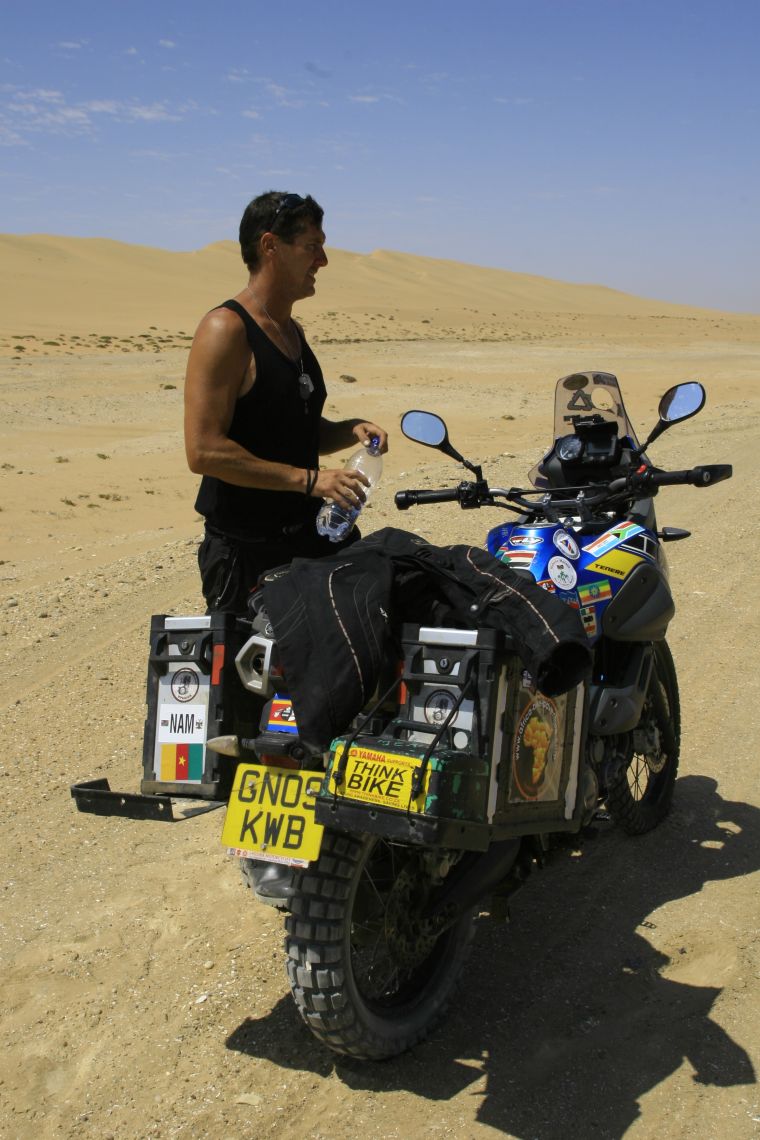Long way down (and back up)
On the 1st of November 2009 Spencer Conway set out on a solo circumnavigation of Africa on a Yamaha XT660Z Tenere. Travelling down the continent via the east coast and returning via the west we pick up Spencer as he heads north and enters Angola.
As of this morning, I’ve spent 167 days attempting to circumnavigate Africa. After riding down the east coast, I literally turned round at the southernmost point of the continent and have now travelled through 16 countries and covered 31,050 kilometres. And whilst it is almost impossible to have a dull moment in this continent, I’ve now stumbled upon the two most exciting, confusing and visually stimulating countries so far: Angola and the Democratic Republic of Congo.
As if to confirm this I am sitting writing this is a gloomy filthy room in Kinshasa while in the streets riots are going on over police brutality. Two policemen have been shot dead and I fear that the ever-present armed forces will want revenge. But more of that later.
I entered Angola through the Santa Clara border with Namibia but only after having waited 14 days for the visa, being relieved of my HD camera by thieves (which I was to sorely regret when I saw the beauty that Angola had to offer) and lastly having been rolled on by an extremely obese man while I was sleeping.
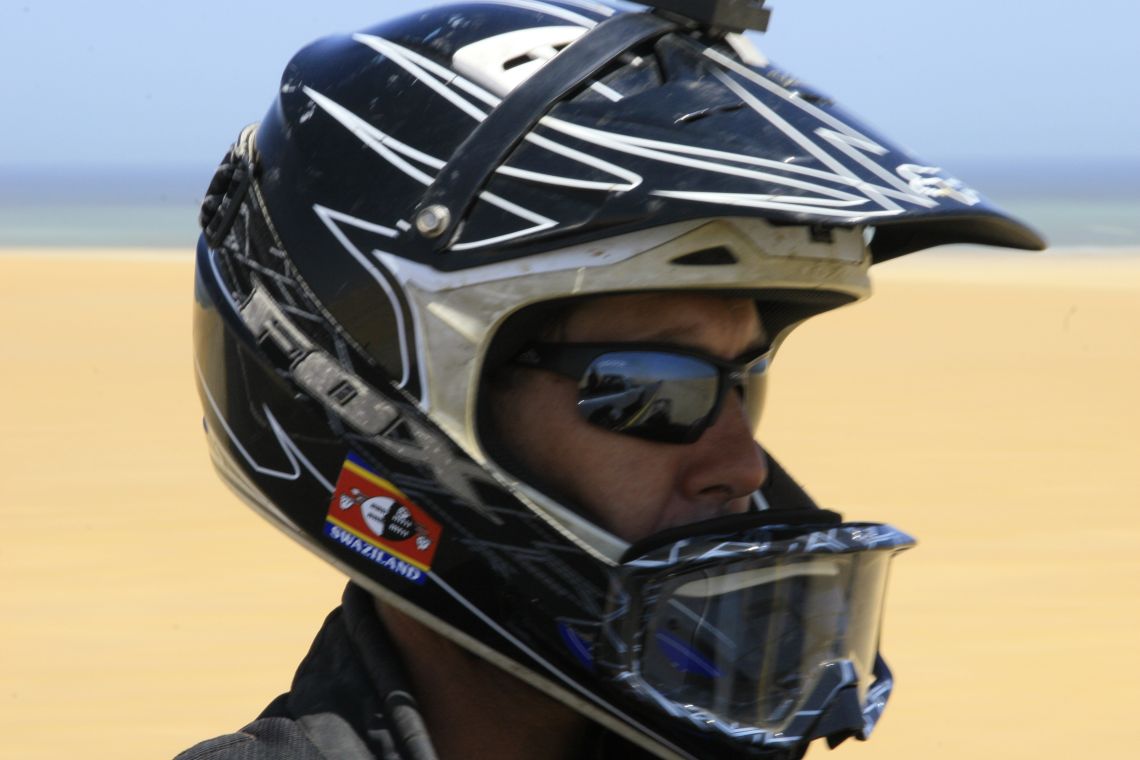
On the last night before crossing the border I offered to buy a few drinks for Bongani, a Swazi/Namibian who I had befriended and had been very helpful during the days I was stuck at the border. Unfortunately, he was unable to hold his drink and I offered to let him have the inflatable camping mattress and sleep it off on my floor. During the night he decided that he was not comfortable enough and proceeded to lie on top of me.
As riding with broken ribs is not ideal I managed eventually to roll him back on the floor – not without considerable effort as he made Pavarotti look like slimmer of the year. Later I popped to the toilet and when I returned he was snuggled up in my bed with only his head sticking out of the sleeping bag.
This was a bit too much for me and with some hippo herding tactics I learnt in Swaziland (not really!) I managed to coax him out of the door. So after this peaceful night, I found myself in Angola.
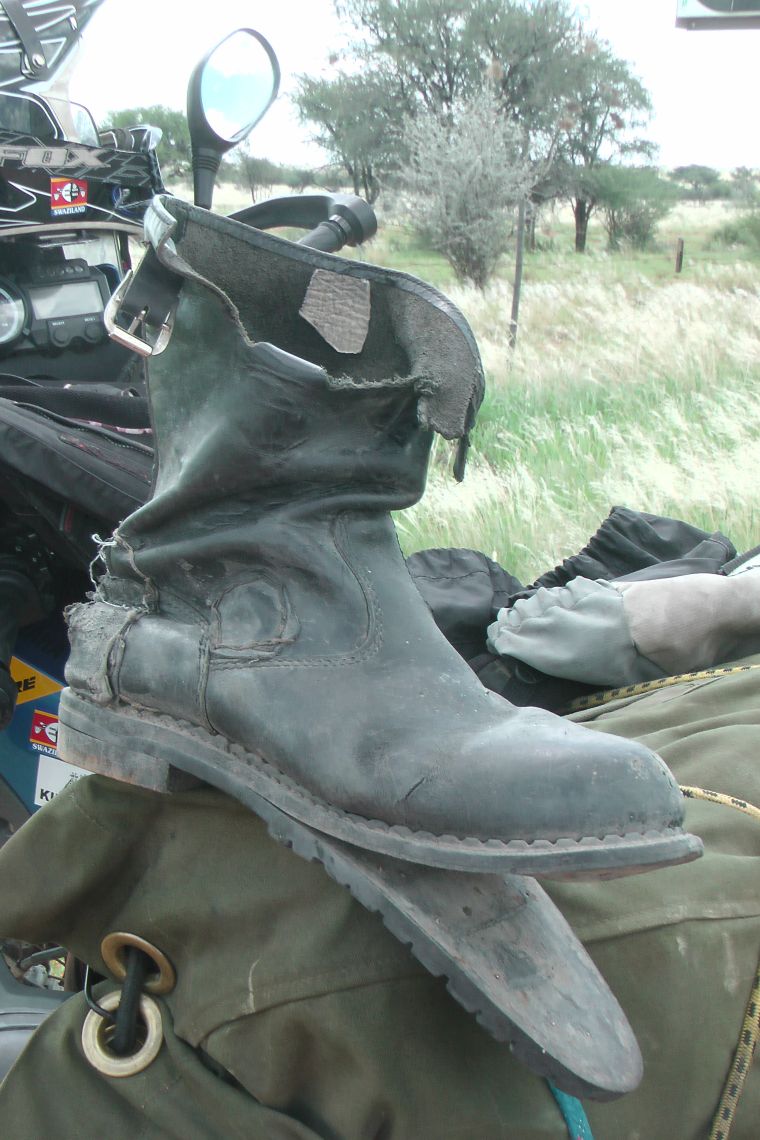
A terrain that is rich in oil, diamonds, iron ore and copper, plus a measurable hydroelectric capacity, Angola has the potential to be one of Africa’s richest states. Instead, the more common reality is of a nation of shattered infrastructure and devastated towns struggling to feed a desperately poor and eternally uprooted population. Despite this, I came across the most resilient, helpful and friendly people I have ever met in Africa.
My first aim was to get to the city of Lubango and I was not disappointed. Although it was a shanty town of massive proportions it had two hidden gems.
The city is overlooked by a spectacular mountain that easily rivals Table Mountain in Cape Town. And perched on the top is a statue of Christ reminiscent of that in Rio. In its shadow live the warm, welcoming people and I spent an excellent evening eating goat kebabs and drinking local beer before heading off the next morning to my next destination, Huambo.
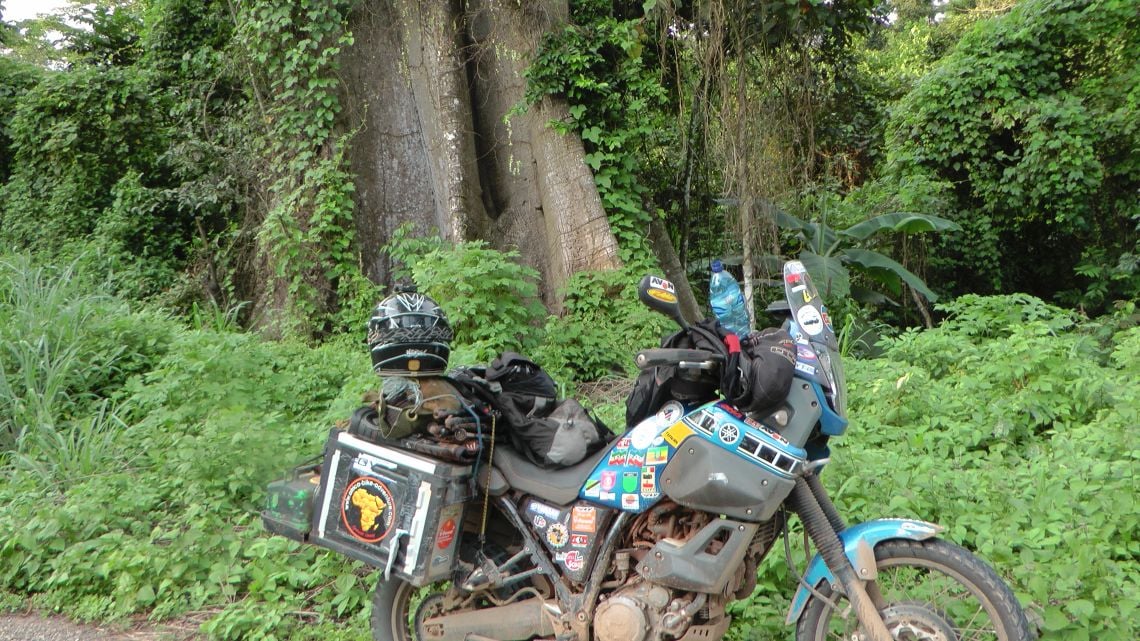
Huambo, formerly known as Nova Lisbon (New Lisbon), has an estimated population of one million. It was once renowned for its expansive parks and attractive colonial buildings and was briefly touted as the country’s capital in waiting. But then came the civil war in 1993, when a gruesome 52-day siege reduced the city to little more than a pile of pock-marked rubble. Although it’s taking the first tentative steps to recovery after a war that lasted 20 years, it now presents a vista that is remarkably surreal.
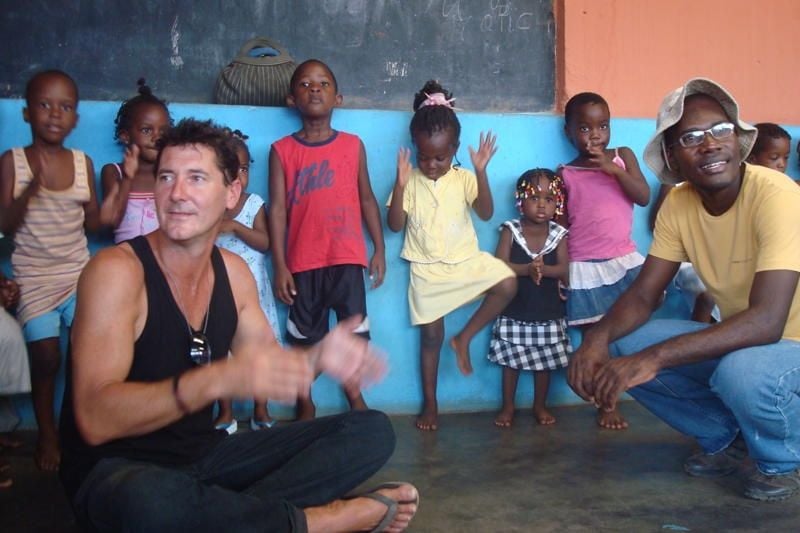
Many of the buildings have no front but are inhabited by families getting on with their day to day domestic life as if it is completely normal. I watched families having dinner, children playing in their rooms and televisions and radios blaring (for some reason Africans enjoy playing both at the same time at ear-shattering volumes). It was like peering into life-sized dolls houses. I felt a bit like a voyeur but eventually realised it was completely normal and when people in the houses caught my eye they waved and smiled greeting me loudly in Portuguese.
From Huambo, my next mission was to get up to the capital Luanda. The roads turned out to be excellent and the countryside extremely beautiful. I was lucky to travel through the rainy season as the vegetation was lush: so green it almost looked like computer graphics, and the road was bordered by shimmering lakes of crystal clear water. Scattered all along the route were small children – in tatty shorts or naked – fishing and swimming or proudly displaying their catch for sale at the side of the road.
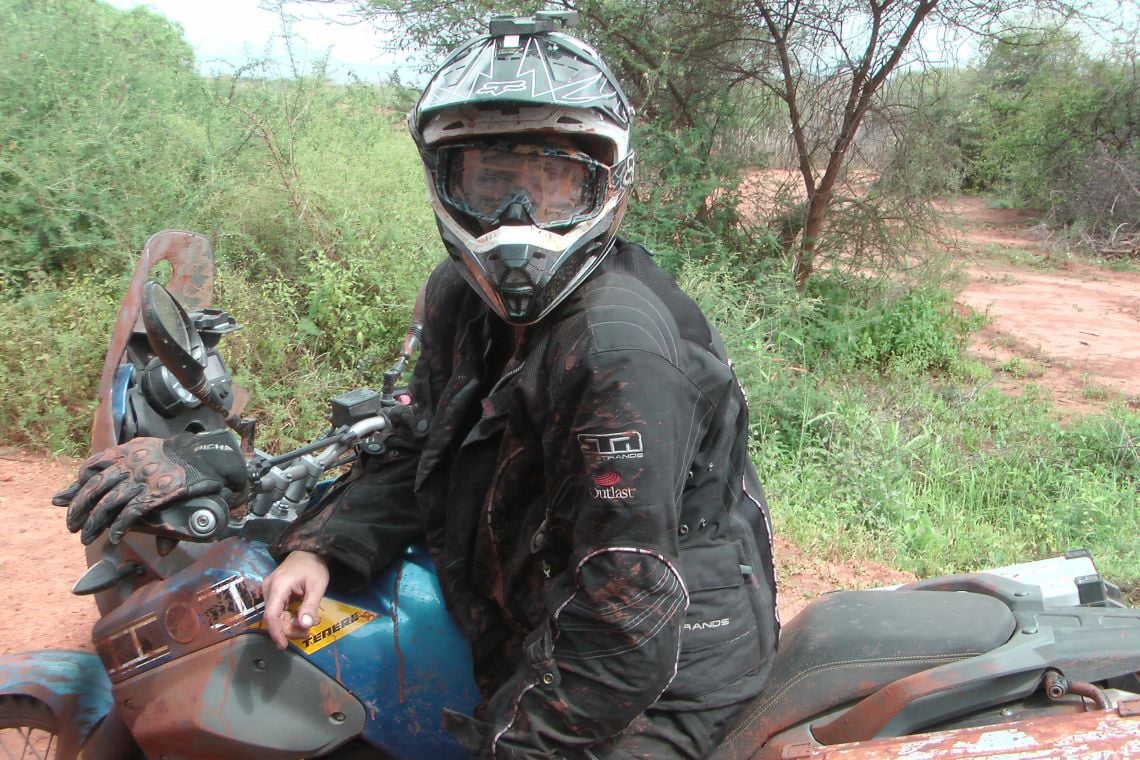
At one stage the vegetation changed and the asphalt road turned into a mud road – an implausible red colour which caused the puddles to become almost fluorescent orange. Lining the road was a massive Eucalyptus forest, the smell of the trees released even more powerfully by the rain pummelling their leaves. It was a spectacular experience made even more special by the fact that there was not a single soul or vehicle around.
Things were made a little more difficult as the rains caused the glue-like red mud to stick to my tyres making them instantly twice the size, and I inevitably fell off four or five times. This only added to the experience and fortunately, none of the tumbles were any problem. I found myself lying on the ground completely caked in mud and laughing out loud at where I found myself. How did I get into this!?
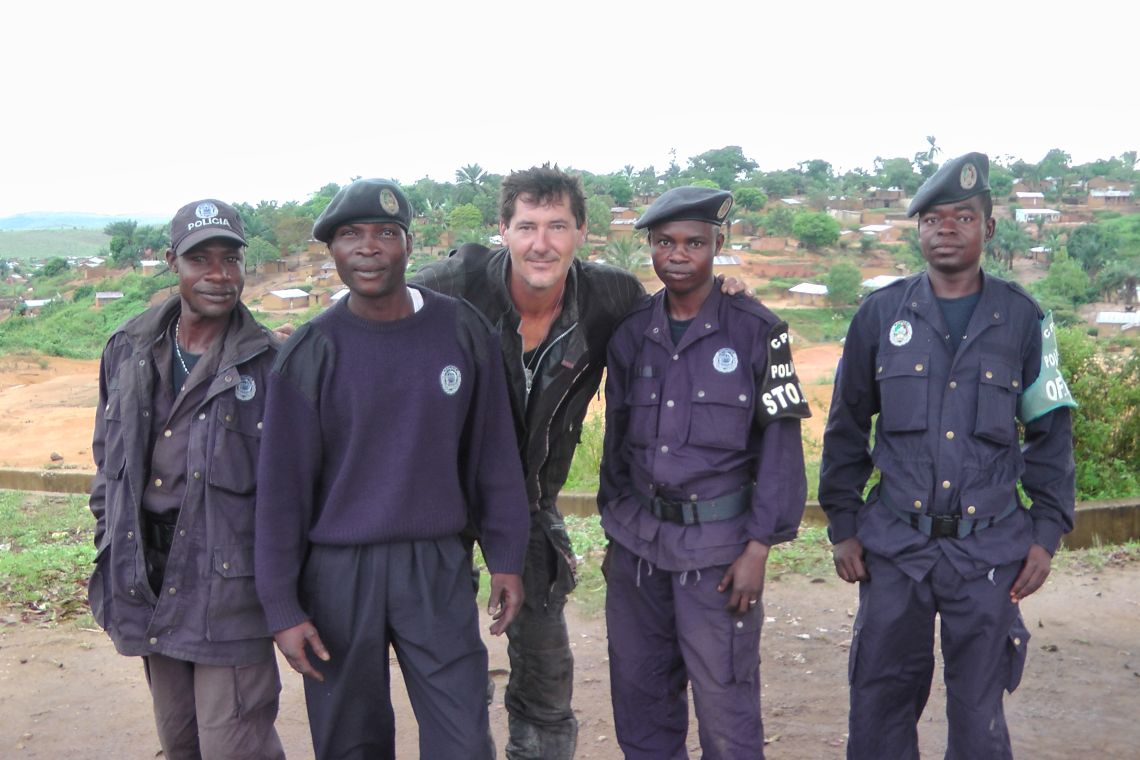
In Luanda, I once again found the Angolan people to be welcoming and had no problem wandering out at night to experience what the city had to offer. My biggest regret was my lack of Portuguese, but the Angolians made this a very special experience for me and up to this point it is unequivocally my favourite country in Africa.
This was in sharp contrast to what I was going to find in Kinshasa, the capital of the Democratic Republic of Congo, made famous by the exploits of Henry Morton Stanley to track the source of the Congo River which led to the interest of King Leopold of Belgium and subsequently the Scramble for Africa in 1878. From this point onwards DRC probably suffered more than any country in the world. But I still had to get there to see it for myself.
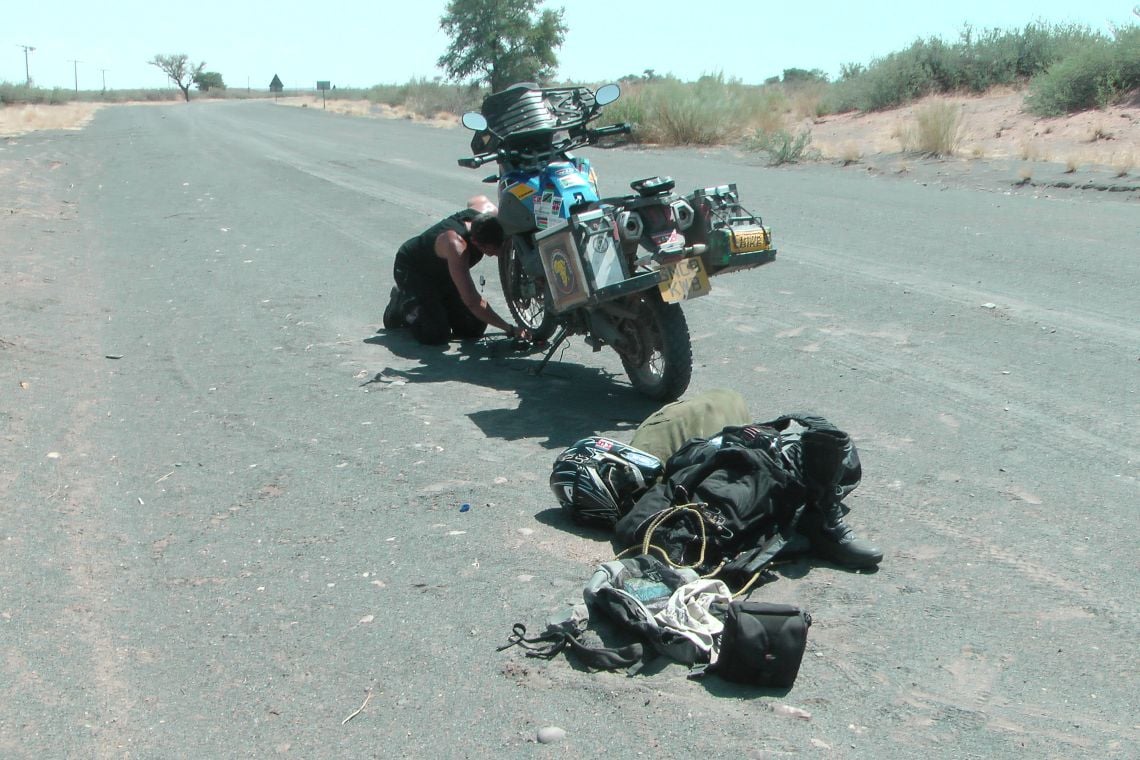
Instead of taking the ‘traditional’ route to Kinshasa through the border of Matadi, I decided to take a gamble and test myself by taking a secondary road through exotic-sounding places such as Maquela de Zombo, Banza Sosso and Ngidinga. It proved to be a remarkable decision as I was thrown into the centre of a tropical jungle with no cars, bicycles, people, electricity and, to be honest, no road.
What they called the road turned out to be a track with ruts metres deep, rivers and puddles as high as my waist and, bordering the path in a thick wall, the lushest tropical forest I had ever seen. Tarzan would have been proud to hack through it and he would never have been able to swing from tree to tree it was so dense. The sounds of the forest were deafening created by monkeys, birds and God knows what.
It was a punishing ordeal for myself and the bike and a test for the most experienced rider. I fell often, getting caught up in the dense undergrowth or slipping in the mud and was drenched to the bone with sweat. This was the hardest ride of my life and I had to psychologically change my maxim, from border by border, to day by day, to kilometre by kilometre and eventually to 100m by 100m.
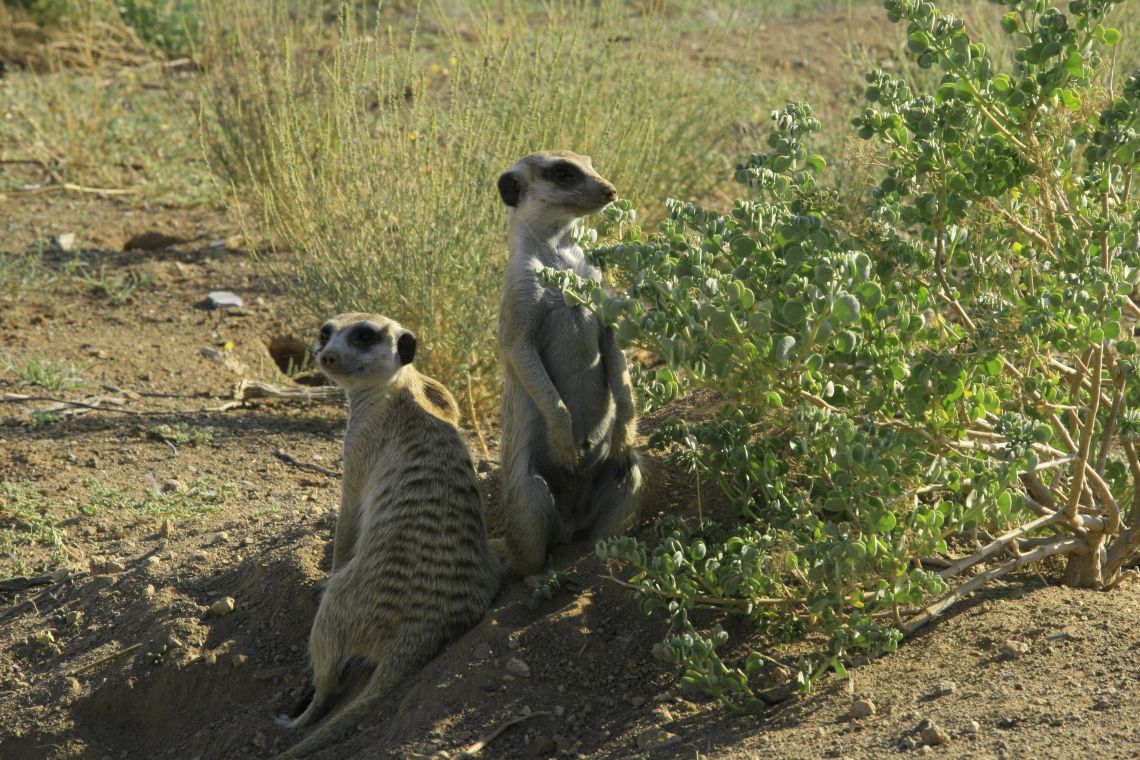
The first day I covered 30km in eight hours, the second 40km in nine hours and on the third I managed 120km as I finally hit the tar road turning to Kinshasa. I felt incredibly proud of my achievement as I had to really work for the kilometres. This was compounded by the fact that when I reached the one-hut border the guard was in awe and said the last foreigner to come here was four years ago. I think he may have been a bit out of touch with the border procedures as he read my passport for a full five minutes upside down and then had no ink in his stamp so had to hand-write over it.
My mood changed as soon as I hit the outskirts of Kinshasa. It was undoubtedly the hottest, dirtiest, most unsafe and least friendly place I have ever driven into. I stopped at a petrol station and asked directions for the centre of the city. I was met with blank expressions – no wonder, as I subsequently found out it was going to take me two hours to get into the centre.
Kinshasa has an estimated 12 million people and is incredibly poor. The majority of people survive by selling what they can on the streets, like plastic bags of water. The whole city is covered layers deep in these bags (the inventor of plastic has a lot to answer for). Others mill around holding 20 pairs of sunglasses in each hand in some octopus-imitating act, while others carry an exceptional number of baguettes on their head and are armed with a knife and a tub of margarine.
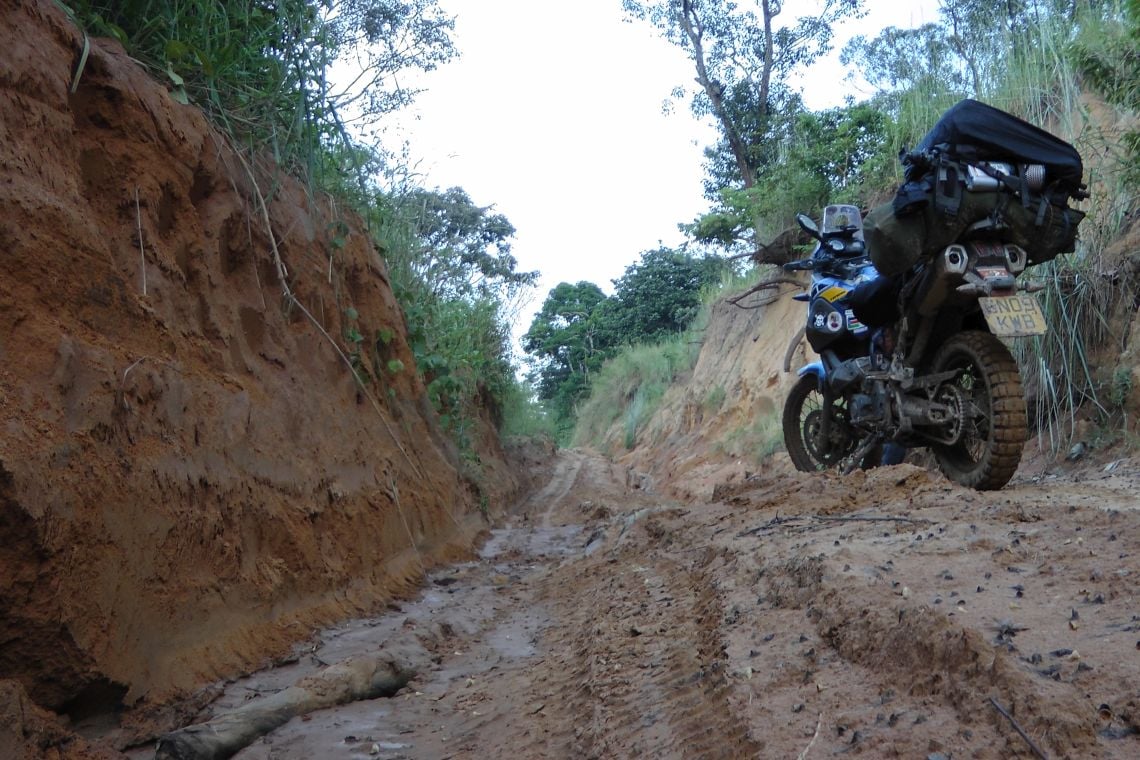
Jostling for space are the food sellers: chicken in peanut sauce, fish wrapped in palm leaves and caterpillars and crocodile meat (the oysters and caviar of Kinshasa’s culinary scene), or chikwange –the leaf-wrapped blocks of fermenting cassava paste that to the uninitiated resembles warm carpet glue. Then there are the fruit, mobile phone, cigarette and soft drink sellers, again balancing ridiculous numbers of products on their heads. Needless to say, all the brands are fake and one particularly enthusiastic salesman tried to sell me a pair of sunglasses with one arm missing – do I look like Van Gogh?
Adding to the mayhem are the ubiquitous yellow and blue taxis and minivans careering around with their sweating human cargo bouncing on the potholed roads. On every street corner are the Cheges, or street children (named after Che Guevara for some reason), who are feral and intimidating; demanding money and calling you ‘Le Blanc’ or worse if you don’t oblige. Seated on stools around the city are the money changers (always women) with huge wads of Central African Francs, a thousand of which might buy you a soft drink.
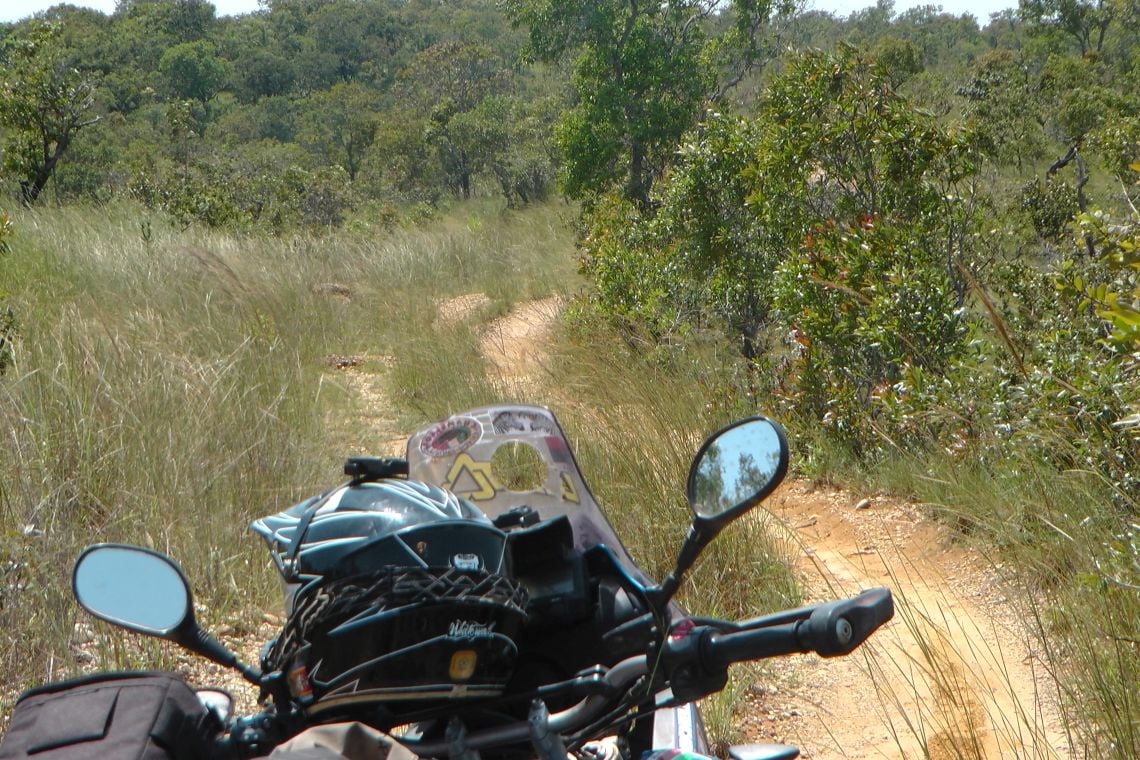
Everywhere there is French and Lingala simultaneously machine-gunning out of hundreds of mouths as people try to make their life heard. Among all of this are the occasional fat cats with brand new American 4x4s, smart suits, raybans and mobile phones scornfully ignoring the masses surrounding their trucks trying to sell their wares. Finally, pushing, jostling and dragging themselves around the capital, are the disabled and deformed and the cart pushers with their unfeasibly heavy loads, with muscular bodies and shaved heads glistening with sweat.
It was a scene at the port that distressed me the most. I went to check on tickets for the ferry across the river to the Capital of Congo, Brazzaville, when a scene unfolded in front of me straight out of a horror film. The disabled traditionally travel on hand pedalled tricycles across on the ferry and load up their wheelchairs with goods to sell back in Brazzaville. In the past they were allowed to travel free but this privilege has been taken away as they are suspected drug runners.
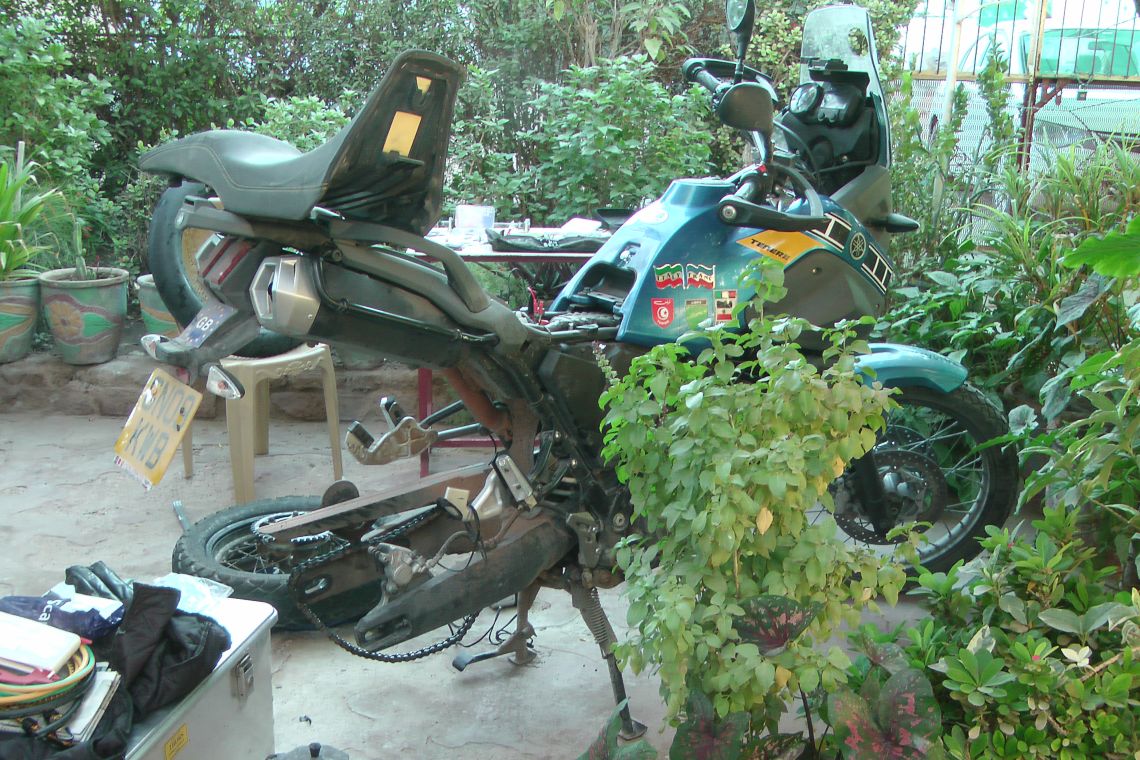
However, the police refuse to touch them or search them as they are believed to have special powers. So the disabled have been forced to run the gauntlet of beatings as they disembark. A man with shrivelled legs was dragging himself across as the police beat him about the head with batons. It was so vicious that his eye immediately split and swelled to the size of a tennis ball. Others had their heads split open with rifle butts while the lucky ones got away with a few whippings. It made me feel nauseous and I could not stay to find out about my ticket.
I have been here for a week and I have not seen a single tourist. The only foreigners I have seen are members of aid agencies and can only be seen in 4x4s – they never walk in the street. The UN presence is the biggest in the world – 20,000 troops, and also here are UNICEF, World Food Programme, WHO, and Save the Children to name a few. They keep their lives completely separate and go from compound to compound. A member of STC did not see the irony when I suggested walking to a café and he replied, “No, no we must drive – the children are too dangerous.”
I have taken the conscious decision to walk around but have had my rucksack nearly snatched and have been nearly forced into a car by fake police. But I will continue my journey and hope that things improve for the citizens of a beautiful land that was systematically plundered by the mighty leopard Mobutu Sese Seko for 30 years.
WHO’S WRITING
Spencer Conway has lived and worked in the UK, Kenya, Swaziland, Seychelles and South Africa and travelled around more than seventy countries on five continents. He gained a Masters Degree in Anthropology from Edinburgh University, is a qualified teacher (T.E.F.L), cliff rescuer, gym instructor, first aider and diver.
He has this to say about his African adventure;
‘I will be undertaking the trip solo and completely unsupported on the cheapest possible budget, camping all the way and relying on the hospitality of the local people’. ‘I have also decided to try and raise £28,000 for Save The Children making the trip infinitely more worthwhile. ‘The merits of Save The Children are self-evident as all children deserve proper healthcare, food, education and protection. I hope I can help in a small way’.
You can follow Spencer on his return leg at www.africa-bike-adventure.com/home.htm

